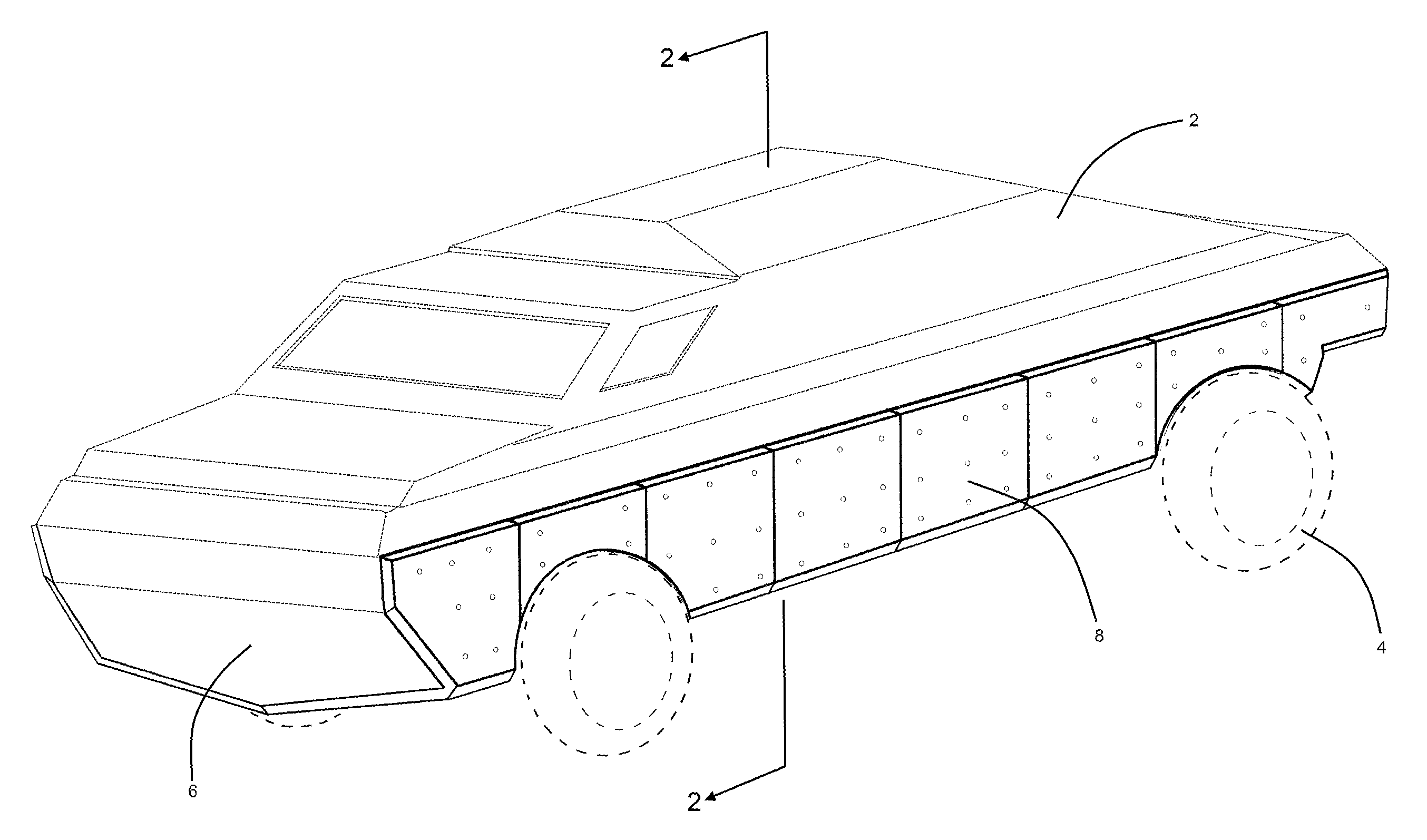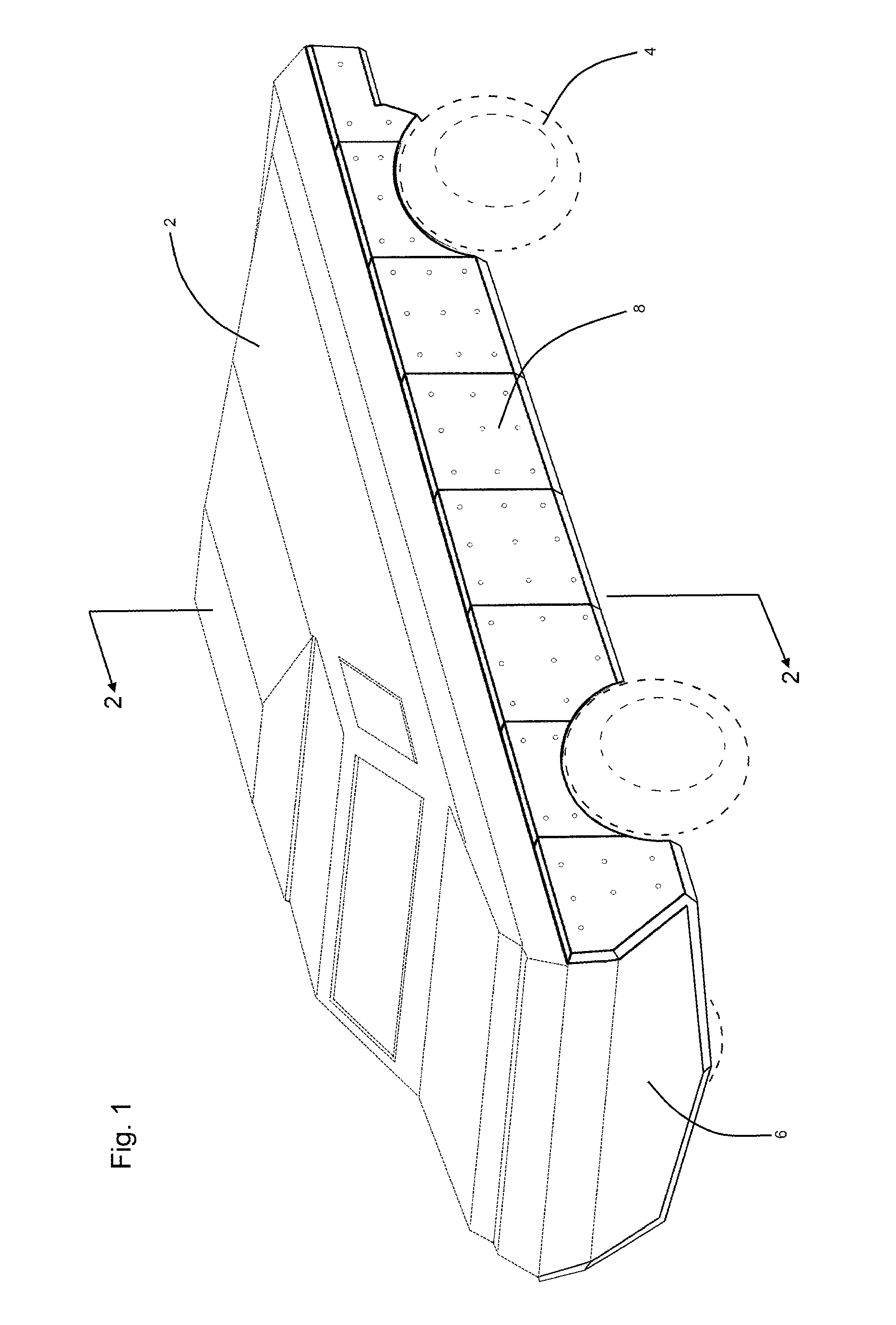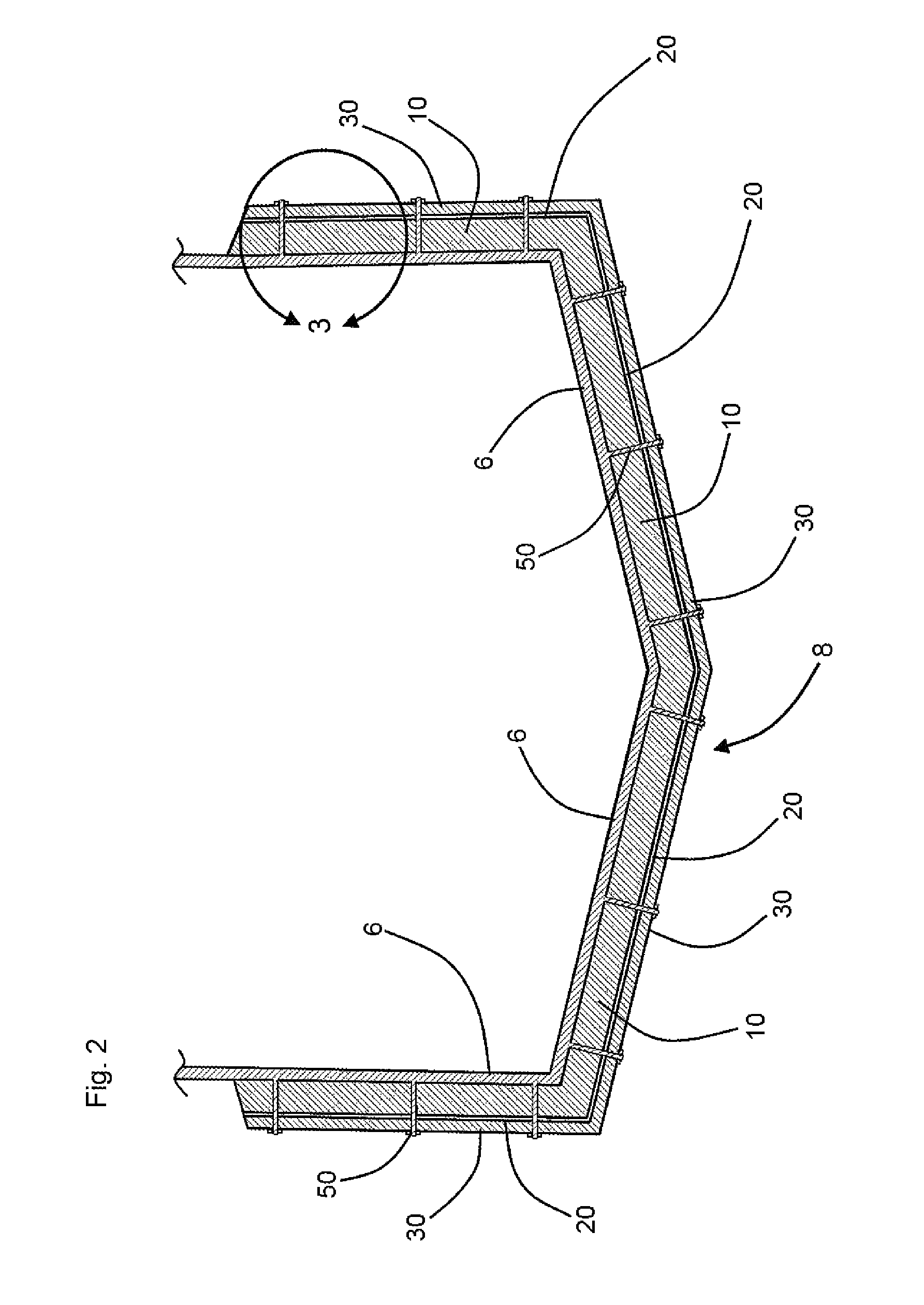Assembly for armoring an amphibious vehicle against projectile penetrations
a technology for amphibious vehicles and projectiles, applied in the field of motorized amphibious vehicles, can solve the problems of affecting the normal acceptance of adding armor to military land vehicles, affecting the performance of amphibious vehicles upon water use, and affecting the performance of amphibious vehicles, etc., to achieve the effect of maximizing water buoyancy, increasing the ability of sheets to fragment and impinge projectiles, and high hardness to weight ratio
- Summary
- Abstract
- Description
- Claims
- Application Information
AI Technical Summary
Benefits of technology
Problems solved by technology
Method used
Image
Examples
Embodiment Construction
[0016]Referring now to the drawings, and in particular to FIG. 1, a military amphibious vehicle 2 has a steel hull wall 6 that extends from the vehicle's bow to stern and from its starboard side to port. For use in land operations, the vehicle 2 has powered wheels 4. Alternatively, for use in water operations, the vehicle typically has an engine driven stern mounted water propulsion drive (not within view) such as an exposed propellor or a steerable water jet nozzle.
[0017]Referring further to FIG. 1, an exterior armoring strata 8 is securely mounted over the starboard and port sides of the vehicle's hull 6, and such armoring strata extends over the undersurfaces of the hull 6 from the vehicle's bow end to its stern. Referring further simultaneously to FIGS. 2 and 3, the armoring strata 8 comprises a relatively thick buoyant sheet 10. As depicted, the buoyant sheet 10 is approximately twenty millimeters thick. The buoyant sheet 10 preferably comprises a hardened and water resistant o...
PUM
 Login to View More
Login to View More Abstract
Description
Claims
Application Information
 Login to View More
Login to View More - R&D
- Intellectual Property
- Life Sciences
- Materials
- Tech Scout
- Unparalleled Data Quality
- Higher Quality Content
- 60% Fewer Hallucinations
Browse by: Latest US Patents, China's latest patents, Technical Efficacy Thesaurus, Application Domain, Technology Topic, Popular Technical Reports.
© 2025 PatSnap. All rights reserved.Legal|Privacy policy|Modern Slavery Act Transparency Statement|Sitemap|About US| Contact US: help@patsnap.com



